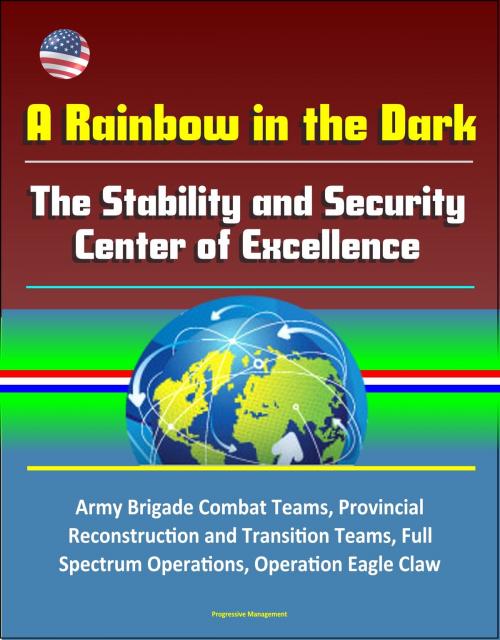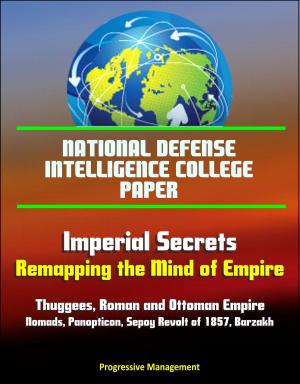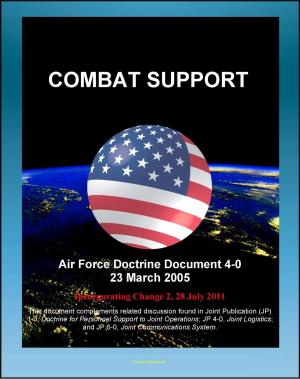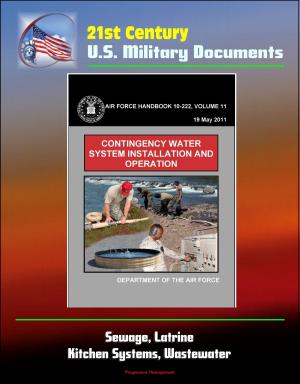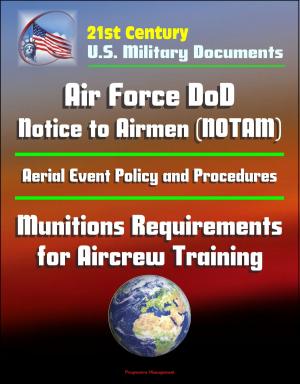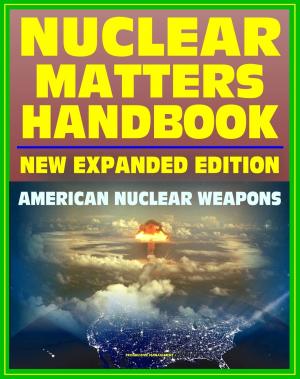A Rainbow in the Dark: The Stability and Security Center of Excellence - Army Brigade Combat Teams, Provincial Reconstruction and Transition Teams, Full Spectrum Operations, Operation Eagle Claw
Nonfiction, History, Military, Strategy, United States| Author: | Progressive Management | ISBN: | 9781370179060 |
| Publisher: | Progressive Management | Publication: | August 30, 2016 |
| Imprint: | Smashwords Edition | Language: | English |
| Author: | Progressive Management |
| ISBN: | 9781370179060 |
| Publisher: | Progressive Management |
| Publication: | August 30, 2016 |
| Imprint: | Smashwords Edition |
| Language: | English |
This excellent report has been professionally converted for accurate flowing-text e-book format reproduction. The 21st Century has been dubbed an era of persistent conflict by U.S. military leaders. As a result, United States' defense forces will have to operate in environments requiring a variety of "full spectrum operations" for the near future. Stability operations are now considered as having equal importance to major combat operations and this thesis will explore an institutional approach to prepare U.S. military forces to conduct these types of operations. This thesis will analyze four themes: U.S. views on future stability and security operations, the United States' conventional force role in future stability and security operations, current efforts to institutionalize stability and security operations, and past U.S. institutional changes in response to threats in the strategic environment. Unfortunately, there is little unity of effort and ownership to institutionalize stability operations in the U.S. Army. This thesis recommends a new institution to educate and develop leaders to maximize unity of effort, flexibility and responsiveness for stability operations: the Stability and Security Center of Excellence.
CHAPTER 1 - INTRODUCTION * Introduction to the Problem * Background of Study. * Primary Research and Secondary Questions * Significance of the Study * CHAPTER 2 - LITERATURE REVIEW * CHAPTER 3 - RESEARCH METHODOLOGY * Summary * CHAPTER 4 - ANALYSIS * U.S. Views on Future Stability and Security Operations * The Conventional Force Role in Future Stability and Security Operations * Current Efforts to Institutionalize Stability and Security Operations * Past Institutional Changes in Response to Threats in the Strategic Environment * Conclusion * CHAPTER 5 - CONCLUSIONS AND RECOMMENDATIONS * Summary * Recommendation * Command Structure * Advisory Team Department * The SSCOE and U.S. Army Officer Career Path * Suggestions for Further Research * Conclusion * REFERENCE LIST
This excellent report has been professionally converted for accurate flowing-text e-book format reproduction. The 21st Century has been dubbed an era of persistent conflict by U.S. military leaders. As a result, United States' defense forces will have to operate in environments requiring a variety of "full spectrum operations" for the near future. Stability operations are now considered as having equal importance to major combat operations and this thesis will explore an institutional approach to prepare U.S. military forces to conduct these types of operations. This thesis will analyze four themes: U.S. views on future stability and security operations, the United States' conventional force role in future stability and security operations, current efforts to institutionalize stability and security operations, and past U.S. institutional changes in response to threats in the strategic environment. Unfortunately, there is little unity of effort and ownership to institutionalize stability operations in the U.S. Army. This thesis recommends a new institution to educate and develop leaders to maximize unity of effort, flexibility and responsiveness for stability operations: the Stability and Security Center of Excellence.
CHAPTER 1 - INTRODUCTION * Introduction to the Problem * Background of Study. * Primary Research and Secondary Questions * Significance of the Study * CHAPTER 2 - LITERATURE REVIEW * CHAPTER 3 - RESEARCH METHODOLOGY * Summary * CHAPTER 4 - ANALYSIS * U.S. Views on Future Stability and Security Operations * The Conventional Force Role in Future Stability and Security Operations * Current Efforts to Institutionalize Stability and Security Operations * Past Institutional Changes in Response to Threats in the Strategic Environment * Conclusion * CHAPTER 5 - CONCLUSIONS AND RECOMMENDATIONS * Summary * Recommendation * Command Structure * Advisory Team Department * The SSCOE and U.S. Army Officer Career Path * Suggestions for Further Research * Conclusion * REFERENCE LIST
